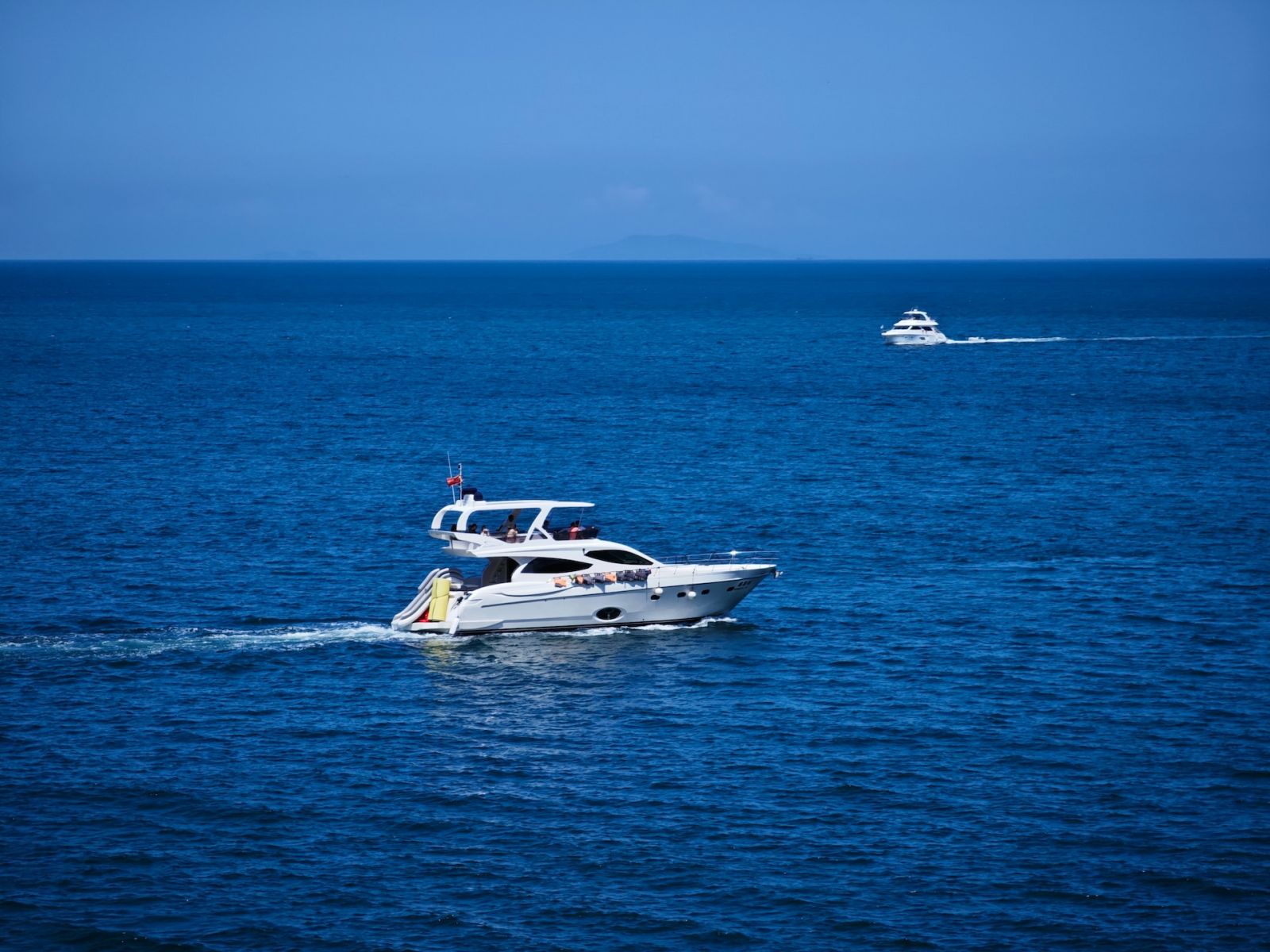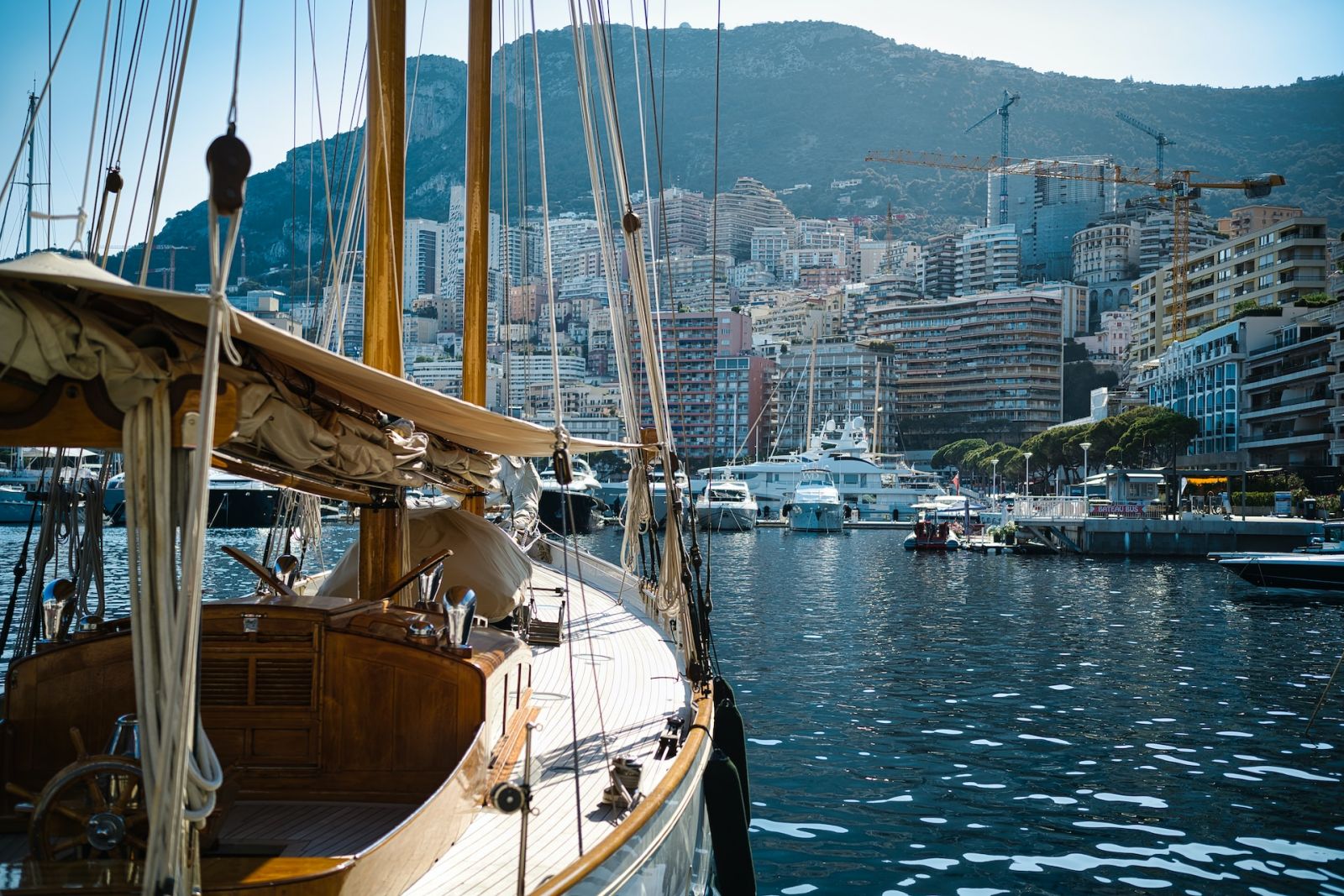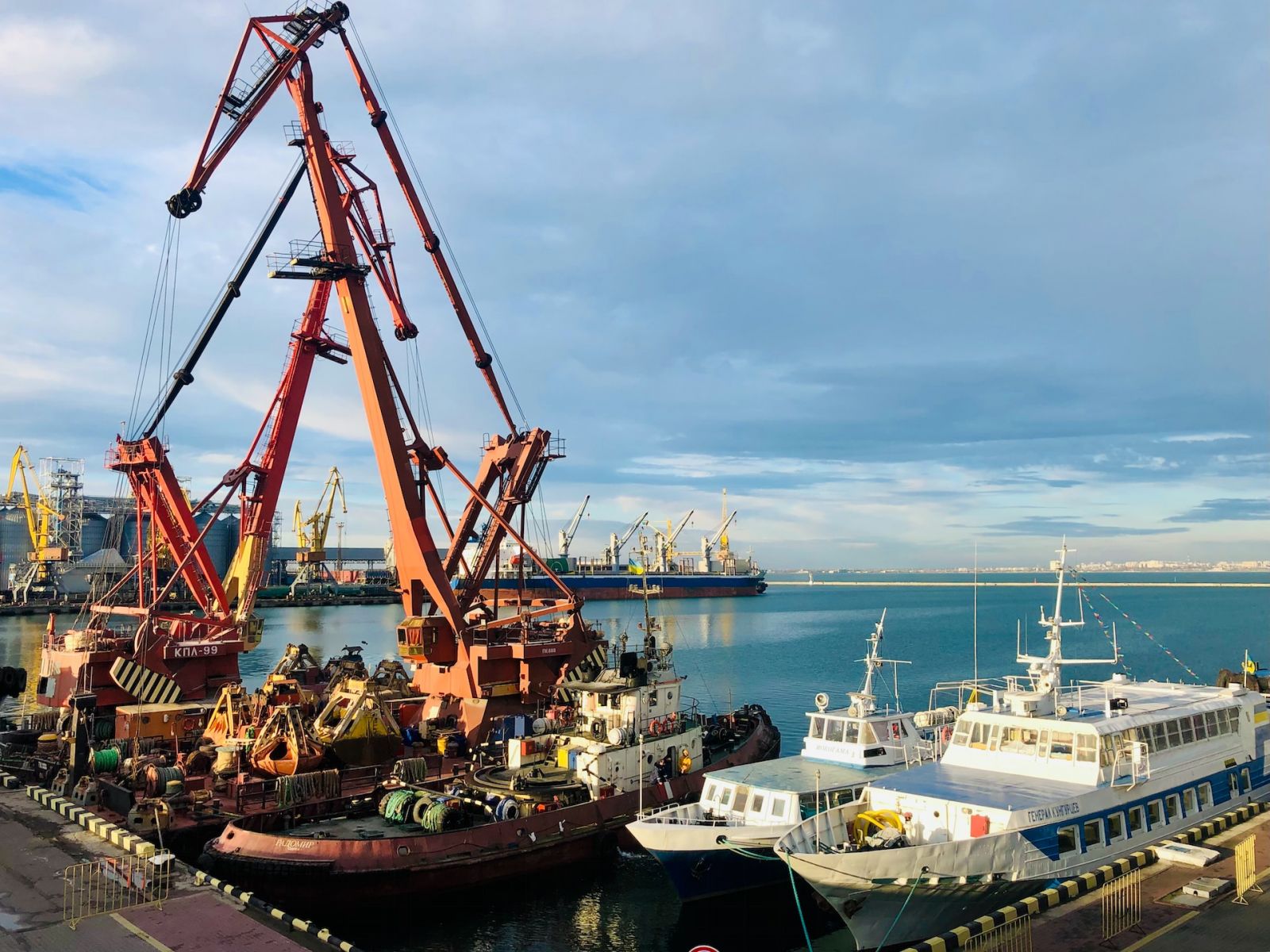How Long Does It Take to Build a Yacht? (7 Types)

Building a yacht requires time, effort, and dedication. Factors such as customization, size of the yacht, design complexity, material availability, and shipyard workload can influence how long it takes to complete the process. In this article, we will explore the construction timeline for seven different types of yachts and gain insight into the intricacies of each type.
It could take anywhere from 6 to 12 months to build a fishing yacht; 8–18 months to build a motor yacht and a sport cruiser yacht; 10–24 months to build a sailing yacht; 12–24 months to build a performance yacht; 12–36 months to build a classic yacht; and 24–36 months to build a luxury super yacht.
These yachts all have unique build times and levels of complexity. Regardless of which type you choose, always prioritize working closely with an experienced design team and shipyard.
Summary
- It could take anywhere from two to four years to fully construct and finalize a superyacht.
- Some of the most experienced design teams include Nuvolari Lenard, Espen Oeino International, and Philippe Briand.
- A few reputable shipyards in the yacht building industry include Lurssen, Feadship, Benetti, and Oceanco.
On this page:
Time Frame for Building Different Types of Yachts
| Types of Yachts | Time Frame for Building |
|---|---|
| Sailing yachts | 10 to 24 months |
| Motor yachts | 8 to 18 months |
| Luxury super yachts | 24 to 36 months |
| Performance yachts | 12 to 24 months |
| Fishing yachts | 6 to 12 months |
| Sport cruiser yachts | 8 to 18 months |
| Classic yachts | 12 to 36 months |
Sailing yachts take anywhere from 10 to 24 months
When it comes to building a sailing yacht, you can expect the process to take anywhere from 10 to 24 months, depending on the size and complexity of the design. Sailing yachts generally require more attention to detail in terms of rigging and sail systems, which can add more time to the build process.
-
Design: The design process involves creating a detailed plan for the yacht's hull, rigging, and sail systems.
-
Construction: The construction process usually involves building the hull first, followed by the installation of the rigging and sail systems. The hull is typically constructed using a combination of fiberglass, carbon fiber, and other materials.
-
Interior: This may include features such as a navigation station, galley, and sleeping quarters that are designed to be secure and comfortable while underway. The interior may also include features such as a salon or entertainment area, as well as storage space for equipment and supplies.
-
Testing: After the yacht is fully constructed, sea trials are conducted to ensure that the yacht performs as expected under a variety of wind and sea conditions.
-
Delivery: The final step is delivering the yacht to the owner's desired location and ensuring that all systems are functioning properly. This step is the same for all types of yachts.

Motor yachts typically take less time to construct
It can take from 8 to 18 months to build a motor yacht. This is due to their simpler propulsion systems and less intricate rigging requirements. Keep in mind that customization options and the level of luxury desired will also play a role in the overall construction time.
-
Design: The design process involves creating a detailed plan for the yacht's hull and propulsion system.
-
Construction: The construction process usually involves building the hull first, followed by the installation of the propulsion system. The hull is typically constructed using a combination of fiberglass, aluminum, or steel.
-
Interior: This may include features such as a spacious salon, dining area, and multiple sleeping quarters, as well as entertainment systems and other luxury finishes. The interior may also include features such as a galley, navigation station, and storage space for equipment and supplies.
-
Testing: After the yacht is fully constructed, sea trials are conducted to ensure that the yacht performs as expected under a variety of sea conditions.
Luxury super yachts take 36 months or longer
Building a luxury super yacht is a much more complex and time-consuming process, which can take anywhere from 24 to 36 months or even longer. This type of yacht often requires a custom design, advanced engineering, and a higher level of luxury finishes that take time to properly execute and install.
-
Design: The design process involves creating a custom plan for the yacht's hull, interior layout, and luxury finishes.
-
Construction: The construction process usually involves building the hull first, followed by the installation of the interior and luxury finishes. The hull may be constructed using a variety of materials, including steel and aluminum.
-
Interior: The interior construction of a luxury super yacht is typically designed to provide the ultimate in luxury and comfort, with a focus on high-end finishes and custom features that reflect the owner's personal style and preferences. This may include features such as a spa, a cinema, and multiple decks.
-
Testing: After the yacht is fully constructed, sea trials are conducted to ensure that the yacht performs as expected under a variety of sea conditions.
Performance yachts take 12 to 24 months
Performance yachts emphasize speed and agility, so their build time can vary depending on the materials used and the complexity of the design. Generally speaking, you can anticipate a time frame of 12 to 24 months for the construction of a performance yacht.
-
Design: The design process involves creating a plan for the yacht's hull and propulsion system that will provide the desired speed and handling characteristics.
-
Construction: The construction process usually involves building the hull first, followed by the installation of the propulsion system. The hull may be constructed using lightweight materials such as carbon fiber.
-
Interior: The interior is constructed to provide a comfortable living space for the owner and guests, while also accommodating the performance requirements of the yacht. This may include features such as a streamlined and minimalist design, lightweight materials, and a focus on functionality and performance.
-
Testing: After the yacht is fully constructed, sea trials are conducted to ensure that the yacht performs as expected under a variety of sea conditions, including high speeds.

Fishing yachts take anywhere from 6 to 12 months
Fishing yachts are specialized yachts with customized equipment and features catering to their specific purpose. Depending on the size and complexity, building a fishing yacht can take anywhere from 6 to 12 months. Optimizing the vessel for fishing requirements may extend the construction time.
-
Design: The design process involves creating a plan for the yacht's hull and interior layout that will provide the desired level of functionality and storage space for fishing equipment and catch.
-
Construction: The construction process usually involves building the hull first, followed by the installation of customized fishing equipment and storage features.
-
Interior: The interior is constructed to provide a comfortable living space for the owner and guests, while also accommodating the specialized requirements of fishing trips. This may include features such as customized fishing equipment and storage space for catch, as well as a galley, sleeping quarters, and entertainment systems.
-
Testing: After the yacht is fully constructed, sea trials are conducted to ensure that the yacht performs as expected under a variety of sea conditions, including rough waters.
Sport cruiser yachts take from 8 to 18 months
Sport cruiser yachts are designed for both performance and luxury, and their construction time generally ranges from 8 to 18 months. Factors such as the level of customization and the type of propulsion system can impact the build time.
-
Design: The design process involves creating a plan for the yacht's hull and propulsion system that will provide the desired level of performance and luxury.
-
Construction: The construction process usually involves building the hull first, followed by the installation of the propulsion system and luxury finishes. The hull may be constructed using a combination of fiberglass and other lightweight materials.
-
Interior: The interior is constructed to provide a comfortable living space for the owner and guests, while also accommodating the performance requirements of the yacht. This may include features such as a spacious salon, dining area, and multiple sleeping quarters, as well as entertainment systems and other luxury finishes.
-
Testing: After the yacht is fully constructed, sea trials are conducted to ensure that the yacht performs as expected under a variety of sea conditions, including high speeds.
Classic yachts can take longer to build
Lastly, classic yachts have a timeless design that may incorporate traditional materials like wood, brass, and copper. The hull is typically built using traditional boatbuilding techniques such as plank-on-frame construction, which involves layering wooden planks over a wooden frame. Due to the craftsmanship and specific skill set required for their construction, these yachts can take longer to build, ranging from 12 to 36 months or even more.
-
Design: The design process involves creating a plan for the yacht's hull and interior that reflects a traditional or vintage style.
-
Construction: The construction process usually involves using high-quality materials such as wood and brass to create a timeless look and feel. The hull is typically constructed using traditional boatbuilding techniques.
-
Interior: The interior is constructed to provide a luxurious and elegant living space that reflects the classic style of the yacht. This may include features such as wood paneling, brass fittings, and traditional furnishings. The specific requirements of a classic yacht may include features such as a spacious salon, dining area, and multiple sleeping quarters, as well as entertainment systems and other luxury finishes.
-
Testing: After the yacht is fully constructed, sea trials are conducted to ensure that the yacht performs as expected while also maintaining its classic appearance. This may involve testing the yacht's speed, maneuverability, and stability under a variety of sea conditions.
-
Delivery: The final step is delivering the yacht to the owner's desired location and ensuring that all systems are functioning properly. Classic yachts may also require ongoing maintenance and restoration to preserve their appearance and value.
The yacht-building process

To give you a better understanding of what to expect, let's dive into each phase of the yacht-building process.
Designing phase of a yacht
During the design phase, you'll work closely with the designer and naval architect to create a completely personalized plan that meets your needs, wishes, and preferences. This stage can vary in length, depending on the complexity and uniqueness of your yacht's design. Collaborative efforts will help ensure the yacht is not only aesthetically pleasing but also functional, comfortable, and efficient to operate.
Construction stage of a yacht
At this stage, your dream yacht starts to take shape. The construction process involves everything from building the hull to outfitting the yacht with luxurious furnishings and cutting-edge technology. A semi-custom yacht build typically takes about 12 months to complete, allowing you to be actively involved in the design, building, and finishing aspects of the project. You'll be working closely with a dedicated team and forming long-lasting relationships during this time.
Testing of completed yacht
Once your yacht is completed, it will undergo a series of tests and trials to ensure its performance, safety, and seaworthiness. Sea trials are a crucial step in the yacht building process, and they involve surveyors who assess the yacht's performance and operation. Any potential issues will be addressed during this phase, ensuring that your yacht is ready for your adventures when it leaves the shipyard. Testing involves sea trials to ensure that the yacht performs as expected under a variety of wind and sea conditions.
Delivery of the yacht to the owner
Finally, your dream yacht is ready for you to take possession. During the delivery phase, ownership is transferred to you, and the yacht is officially registered under your name. After a thorough inspection and signing the necessary paperwork, you can embark on your first voyage and travel the seas in style aboard your custom-built yacht. Delivery involves transporting the yacht to the owner's desired location and ensuring that all systems are functioning properly.
What Impacts the Time to Build A Yacht?

In this section, we'll discuss some of the key factors that can impact the duration of yacht construction, such as customization, size of the yacht, manufacturing complexity, and material availability.
-
The level of customization you want: A highly customized yacht takes longer to design and build since it requires additional time to ensure that all the unique features are seamlessly integrated into the overall structure. Tailoring your yacht to your specific needs or preferences demands close collaboration between the design team, builders, and you. So, the more customization involved, the longer the process generally takes.
-
Size of the yacht: As the size increases, so do the man-hours and resources needed to complete the project. A larger yacht typically has more space for cabins, amenities, and advanced systems, which increase the intricacy of the build. Consequently, it is essential to consider the desired size of your yacht when estimating the construction duration.
-
Manufacturing complexity: Advanced technologies and systems, such as cutting-edge navigation equipment, intricate interior layouts, and innovative propulsion systems, require specialized skills and expertise. If your yacht incorporates advanced features, expect the construction process to take longer than a more straightforward build.
-
Material availability: High-quality, exotic materials can be challenging to source, especially if they are in high demand or come from distant locations. Consequently, any delays in obtaining these materials can impact the overall timeline of the project. It is prudent to work closely with your design team and builders to ensure a smooth flow of materials and keep the project on track.
How to Shorten the Yacht Building Time

Building a yacht can take anywhere from a half-year to four years, but you might be wondering how you can shorten this time. Here are a few tips on how to do just that:
-
Have a clear design in mind: Before you dive into the building process, make sure you have a solid and well-thought-out design. Collaborate with an experienced yacht designer and work on a precise plan for the general arrangement, sail plan, underwater hull, and deck plan.
-
Prioritize decision-making: Many delays occur due to indecisiveness or changes in plans. Make sure you have a strong decision-making process in place and stick to timelines for finalizing choices for interior design, materials, and technology.
-
Choose an experienced shipyard: Opt for a shipyard known for quality and efficiency. They'll likely have streamlined their yacht-building process, helping to minimize delays and keep your project on track. Research the shipyard's reputation and experience with yachts of a similar size and style to yours.
-
Look for modular construction opportunities: Whenever possible, choose materials and construction techniques that allow for components to be built simultaneously or off-site. This can help minimize wait times and ensure a more efficient construction process.
-
Monitor the project closely: Stay involved in the process and maintain regular communication with your yacht builder and designer. Keep an eye on the progress of your project, address any concerns immediately, and work together to find solutions in case of unexpected hiccups.
-
Plan for contingencies: Although you can't predict every potential issue, acknowledging that setbacks may occur and planning accordingly can help mitigate their impact. Establish clear milestones, deadlines, and contingency plans from the start.
-
Invest in proper training and equipment: Ensure your shipyard has access to the latest technology and building techniques to speed up construction time. Additionally, a well-trained workforce will help ensure a more efficient and seamless building process.
Design teams and shipyards
There are many reputable and experienced design teams and shipyards in the yacht building industry. Here are a few examples:
Design Teams:
-
Nuvolari Lenard - This Italian design firm has a reputation for creating some of the most innovative and luxurious yacht designs in the world.
-
Espen Oeino International - This Norwegian design team is known for their sleek and modern yacht designs, as well as their ability to incorporate advanced technology and engineering into their creations.
-
Philippe Briand - This French naval architect has designed a wide range of yachts, from racing sailboats to luxury motor yachts, and is known for his focus on performance and efficiency.
Shipyards:
-
Lurssen - This German shipyard is one of the most renowned in the world, with a history of building some of the largest and most luxurious yachts ever constructed.
-
Feadship - This Dutch shipyard is known for its commitment to quality and craftsmanship, and has built some of the most iconic and innovative yachts in the industry.
-
Benetti - This Italian shipyard has been building yachts for over 140 years and is known for its attention to detail and ability to create custom designs that meet the unique needs of each owner.
-
Oceanco - This Dutch shipyard is known for its innovative designs and commitment to sustainability, with a focus on using advanced technology and materials to create yachts that are both luxurious and eco-friendly.
Did you find the answer to your specific question?
👍 0 👎 0

Leave a comment